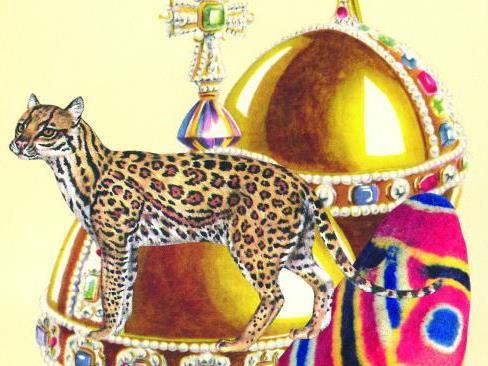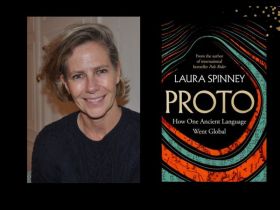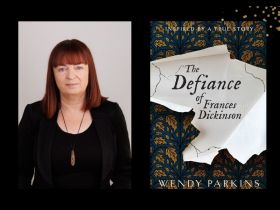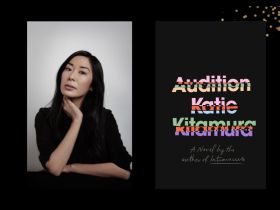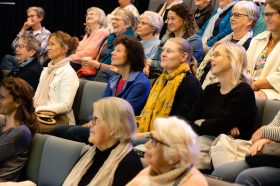A fresh addition to Australia’s burgeoning literary scene, Materiality is a themed literary journal that includes fiction, essays, images and poetry. Focusing on how personal lives, culture and history have been affected by objects and materials, the befitting theme of the third Materiality edition is ‘precious’.
From literal and direct engagements with the word precious to more nuanced portrayals of what the concept entails, the journal features a varied collection of works. Kate Whitfield’s short story Endling, which kick-starts the journal, deals with how the ravages of humankind have robbed the environment’s biodiversity of something precious — in this case the Tasmanian tiger, otherwise known as the thylacine.
It would be remiss to anthologise a journal under the theme ‘precious’ without a few essays on what is largely considered the most precious of all precious metals – gold. Mike Pottenger’s When Everything Gold Was New Again is a historical exposition of gold’s prominence in trade and industry, something that Pottenger attributes to its ‘perceived value and the ideas that shaped the political economy of the day’ instead of any inherent quality. After all, as Kate Haycock expounds on in her piece Three Grams Per Tonne, ‘gold is basically useless’.
Utilising a similar chronological narrative as Pottenger to chart the pathway of books, Anna Welch goes back to medieval times when books were ‘curling fronds of bluish green, pink tendrils flicking round golden orbs, sly half-beasts prowling through red blooms, lewd antics in the margins round pale-lipped Madonnas and rainbow-winged seraphs’ produced by 40 animals and a team of skilled artists. Fast forward a couple of hundred years and Welch observes how books are accessible, mass-produced and increasingly non-physical in their many digital formats. However, Welch contends that the value of books is far from lost.
‘They’re precious not only because of their golden artistry or their rarity, but because they illuminate history – they make visible the invisible threads that bind us together, and draw us onwards,’ Welch notes.
Hidden in among the essays are a few personal accounts that are the highlights of the journal, for something as subjective as what is precious differs greatly according to whom you speak.
Sarah Caldwell talks about her ‘shadow box’ where ‘each object had a novella-worthy backstory’ and Kelly Gardiner recounts how Jane Eyre was the ‘book to represent all books’ which she chose to take with her when she evacuated her bushfire-threatened house.
In Trash as Treasure, Savina Hopkins illustrates the contentious practice of rifling through someone else’s rubbish for that coveted valuable possession and in Potential, editor Alice Cannon goes back to her yesteryears to recount the all too common experience of picking up a craft as a child but failing to carry it into adulthood.
And what would a journal with the theme ‘precious’ be without a few popular culture references to the ubiquitous Gollum and his favourite phrase? In a delightful piece, Jordi Kerr relates how J.R.R. Tolkien’s The Lord of the Rings gave her the strength to be herself.
On the fiction front, Tom Dullemond’s Fragments bears testament to the power of letters, while Mike Lynch’s The Faithful Alchemist is a curious tale about a nobleman’s obsession with the idea of magic. Delivery Day is a particular highlight, as it fosters an inescapable sense of tension to demonstrate a little girl’s preoccupation with a doll she christens ‘Katherine’.
The poetry in the collection is confined to Shoshanna Beale’s immersive My Precious that will resonate with anyone who harbours a lifelong love affair with chocolate. Bookending the edition is a series of interviews with practitioners who specialise in the art of determining what is precious and what is not – a jeweller, a luthier and a gemmologist. Not to forget a cheeky little zine which sits hidden in an envelope on the very back cover.
At times, the third edition of Materiality comes across as slightly formulaic as most accounts feature a surface engagement with what the concept ‘precious’ entails. An exercise in talking about something precious, without actually using the word ‘precious’ – similar to what The Lifted Brow has done with its current Ego edition in banning use of the first-person pronoun – may have resulted in a more lateral approach. At other times, the journal can be dense with many fact-heavy, dry essays interspersed throughout. That aside, there are numerous instances of strong writing and this very young journal has the potential to grow into itself and push more boundaries in the near future.
Rating: 3 ½ stars out of 5
Materiality Number 3: Precious
Edited by Alice Cannon
Paperback
64 pages
RRP $15.00
Published by Pinknantucket Press
